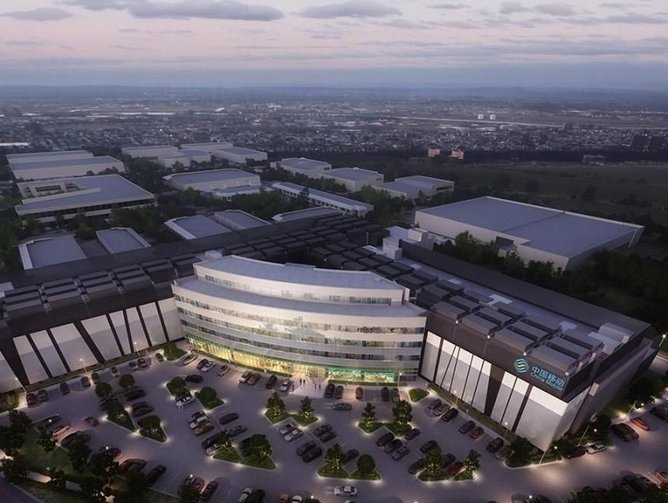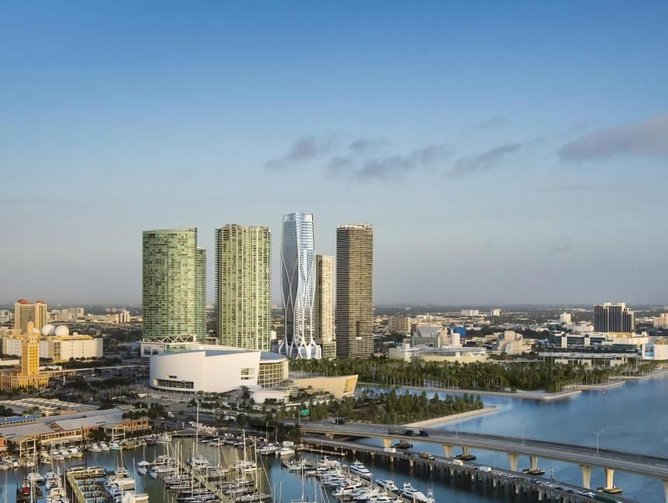Plaza Construction: It’s a big world, and Plaza is building it
Founded in 1986, Plaza Construction aims to be an outstanding builder and trusted partner, creating value for its clients and their communities, through a commitment to excellence and integrity. The company started to expand significantly in 2004 with operations in Miami. Subsequently, Plaza established a presence in Washington DC and in the past 18 months has set up shop in central Florida, specifically in Tampa and Orlando. “We’ve also opened up an office in Los Angeles working as a Project Manager for a large mixed-use project,” adds President, Brad Meltzer. Recently awarded another sizeable project in San Jose, California – a large data center for CMI, China Mobile - Plaza is aiming to focus on markets like these, with a strong outlook for working in partnership with like-minded clients.
Technology plays a big part in Plaza’s approach. “We have a group within our operation specifically focused on innovation. For example, in order to make sure our staff is trained effectively on the systems and software we currently use, such as BIM360, our technology group, along with support from the manufacturer, holds live training sessions in our various regional offices. This allows staff to ask real-world questions to trainers and get immediate feedback and, ultimately, real-world results,” reveals Meltzer. He explains that Plaza beta tests new software on specific projects to carry out a cost benefit analysis to ensure that upgrades will make the company more effective and efficient in the long run. “Sometimes it might be as simple as selecting a new project and testing that tech over a six-month period to make sure it's working effectively for us, before we then roll it out company-wide.”
Meltzer notes that technology is advancing so rapidly, it’s important to avoid a “knee-jerk” reaction to buying every shiny new toy available. “When you’re investing hundreds of thousands of dollars in new solutions, it’s important to make sure these advancements can help your business today. And have the patience to wait for the right technology that works for your organization.”
While technology can provide opportunities, it also represents a challenge for the industry as a whole believes Meltzer. “The biggest issue we face is with training,” he says. “Sometimes technology is like the human brain and we’re only using 10% of our capacity […] so it's important our technology training team reaches all of our staff so they appreciate the true power of the tools they have at their disposal. Plaza’s CEO Richard Wood is a builder first, a former superintendent, who believes in empowering people through workshops and mentoring – it’s part of Plaza’s forward-thinking philosophy.”
Plaza uses software solutions such as PlanGrid (part of the BIM 360 suite from Autodesk) to enhance efficiencies on site. “Five years ago, our superintendents would be walking the job site, with a set of plans,” explains Meltzer, “but there was almost no way to confirm if that was the latest set of drawings. They would need to ask if the drywall and electrical foremen have the latest set? But now, we hand out iPads to all key individuals on site and we're able to know with certainty they're working with the latest set of plans. They can now just pick up the phone and speak to the architect or a subcontractor/vendor at their fabrication facility and know they are collaborating in real time. They can take a picture of a job site condition, tag it to their iPad, to that location, and then are able to discuss and solve that issue.” Innovation is a core value at Plaza and one Meltzer believes makes its staff feel part of a forward-thinking group. “It’s also really helping with recruitment of some of the best and brightest young people in the industry.”
Meltzer believes that Plaza’s collaborative approach, involving key-subcontractors during pre-construction and utilizing their services in design-assist roles, allows the process to be the most successful. This approach between client, architect and contractor has proved successful on numerous projects. For example, we’re currently finishing One Thousand Museum Tower, designed by Zaha Hadid Architects (awarded its TCO in June), arguably the most complicated concrete project in America,” says Meltzer. “If Capform Inc. had not been part of the pre-construction effort with us for such a long time, it would've been much more difficult to have executed that project in such a timely fashion. Power Design did all of the electrical and low voltage work – again it was critical to have them on board early in the process.”
Safety is paramount on all these projects. Corporate Safety Director Tomasz Dering leads operations for Plaza, regularly meeting with OSHA (Occupational Safety and Health Administration) to make sure the company is on track with the latest regulations. “We have safety initiatives to reward the subcontractor workforce for a safe job environment,” adds Meltzer. “We have an incredible safety track record. Our EMR (Experience Modification Rate) is among the lowest in the industry for a company of our size.”
Plaza is committed to building projects of lasting value that not only enhance surroundings but respect the planet. “We work with our clients to make sure that initiatives with regard to sustainability are available through our combined research and efforts with the design team,” confirms Meltzer. “We try to provide these opportunities to our clients at the most reasonable price. There was a time when people thought building green was more expensive but with more products on the market, the cost of achieving a sustainable outcome has become more competitive.” As members of the US Green Building Council (USGBC), Plaza has built roughly $5bn worth of LEED certified projects across America; it’s a strategy at the core of the company’s offering. “One of our most interesting projects in this field was the One Hotel & Homes development on Miami Beach,” reveals Meltzer. “As an adaptive reuse project, it was a gut renovation of an older hotel complex transformed into a sustainable hotel and condominium through the strategic use of reclaimed materials, recycling and effective design solutions. I'm very proud of our team, as well as the collaboration with the owner and design professionals, in achieving that LEED certification.”
Across all sectors Meltzer sees a positive, growing trend for developers to think more strategically. “They’re not viewing their contractor as a commodity any longer,” he says. “We're finding the more experienced and savvy developers engaging with us earlier, bringing us on as part of their team, at the same time they're selecting designers to promote a more collaborative process. More than 90% of what we do is negotiated work. We're working with like-minded clients and their teams all at the same table from inception to completion. That's allowing us to help our clients with regards to schedule and cost early on. If they allow a design team to take a job too far before engaging with a construction manager, it's harder to keep a project on track with respect to time and money.”
Ultimately, Meltzer is keen for Plaza to continue to be known as the go-to contractor in the markets in which it operates. “We will steadily and thoughtfully expand into markets we believe are growing,” he adds. “For a long time, construction was a very territorial business, but I think that's changing and “regions” are expanding. The mindset in America has transformed and I think with Plaza’s strengths and the great story we have to tell we can take our philosophy to new markets.”







